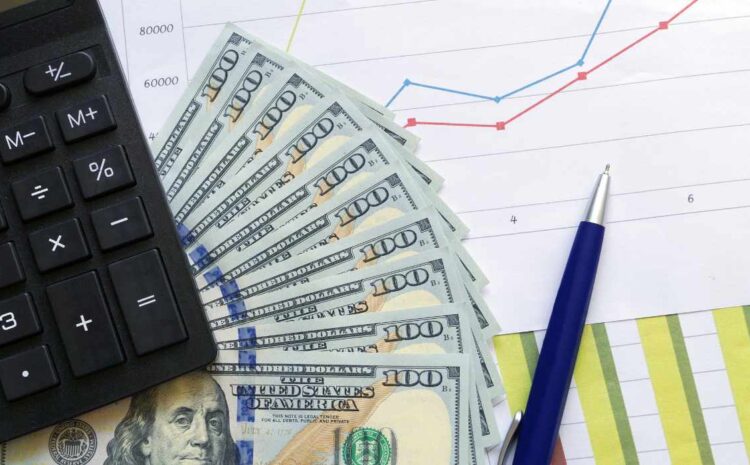Free RevPAR Calculator: Understanding and Improving RevPAR
Introduction: REVPAR Calculator for Hotels
REVPAR, or Revenue per Available Room, is a critical metric for hotels to measure their performance and success in the industry. It provides a comprehensive picture of the revenue generated by each available room, including the occupancy rate and average daily rate (ADR). The higher the REVPAR, the better the hotel’s revenue performance, and the more likely it is to attract and retain guests.
In this article, in addition to the Free REVPAR Calculator, we will explore the importance of REVPAR for hotels, and how it influences the bottom line. We will also provide a step-by-step guide on how to calculate REVPAR, and share practical examples and case studies to illustrate its significance. Finally, we will provide tips and strategies for hotels to improve their REVPAR and increase their revenue and guest satisfaction.
REVPAR CALCULATOR : Free to Use
There are two commonly used methods to calculate REVPAR for hotels:
Method 1: Room Revenue REVPAR CALCULATOR
This formula calculates the revenue generated by each room, based on the average daily rate (ADR) and the occupancy rate. The formula is as follows:
Method 2 – Total Revenue REVPAR CALCULATOR
This formula calculates the total revenue generated by the hotel, based on the number of available rooms (AR) and the total revenue. The formula is as follows:
It’s important to note that the Total Revenue REVPAR formula takes into account not just room revenue, but also other sources of revenue, such as food and beverage, parking, and other services.
In addition to these two formulas, there are other variations of REVPAR that take into account different metrics and factors, such as seasonality, market demand, and competition. However, the Room Revenue REVPAR and Total Revenue REVPAR formulas are the most commonly used formulas for calculating REVPAR in the hotel industry.
It’s crucial to note that REVPAR is a per-room, per-night metric, so it provides a snapshot of the revenue performance of each room and each night. By regularly tracking REVPAR, hotels can identify trends, compare their performance against competitors, and make informed decisions to drive revenue and improve guest satisfaction.
Examples of REVPAR Formula with Data:
To better understand the importance of REVPAR, let’s look at a few real-life examples:
Example 1: A hotel with 100 rooms and an occupancy rate of 70% and an ADR of $100. The total room revenue would be $7,000 ($100 x 70 rooms), and the REVPAR would be $70 ($7,000 ÷ 100 rooms).
Example 2: A hotel with 200 rooms and an occupancy rate of 80% and an ADR of $150. The total room revenue would be $24,000 ($150 x 80 rooms), and the REVPAR would be $120 ($24,000 ÷ 200 rooms).
In these examples, we can see that a higher REVPAR indicates better revenue performance and a higher occupancy rate and ADR. However, it’s crucial to note that a higher REVPAR does not always guarantee a higher profit margin. Hotels need to balance their REVPAR with their expenses, such as labor costs, marketing expenses, and maintenance costs, to ensure they’re generating a healthy profit.
Importance of REVPAR Calculator:
REVPAR is a crucial metric for hotels to measure their success and make informed decisions to improve their revenue performance. Here are a few reasons why REVPAR is so important for hotels:
- Financial Performance Measurement: REVPAR provides a clear and concise measurement of a hotel’s financial performance, helping hotel owners and managers to understand their revenue generation efficiency.
- Identifying Areas for Improvement: By regularly monitoring REVPAR, hotels can identify areas where they can improve their revenue generation, such as by adjusting pricing strategies or improving their occupancy rate.
- Benchmarking Performance: REVPAR allows hotels to compare their performance to industry benchmarks, enabling them to make informed decisions about pricing, marketing, and other important factors that impact their financial performance.
- Understanding Occupancy Rates: REVPAR takes into account both occupancy rates and average room rates, providing a comprehensive picture of how a hotel is performing in terms of revenue generation.
- Staying Competitive: By regularly monitoring REVPAR, hotels can ensure that they are staying competitive in the market and making the most of their available rooms.
- Making Informed Decisions: REVPAR provides hotels with the information they need to make informed decisions about pricing, marketing, and other important factors that impact their financial performance.
- Increasing Revenue: By regularly monitoring and analyzing REVPAR, hotels can take actions to improve their revenue generation and increase their overall profitability.
Factors that Affect REVPAR Calculator
There are several factors that can impact REVPAR for hotels, including:
- Occupancy Rates: The number of rooms occupied by guests is one of the most important factors affecting REVPAR. A higher occupancy rate generally results in higher REVPAR.
- Average Daily Rate (ADR): The average amount of money charged per room per night is another important factor affecting REVPAR. A higher ADR generally results in higher REVPAR.
- Seasonality: The demand for hotel rooms can vary greatly depending on the time of year. During peak seasons, such as holidays or special events, demand is usually higher, which can result in higher REVPAR.
- Competition: The level of competition in a hotel’s market can impact REVPAR. Hotels in highly competitive markets may have to offer lower rates to attract guests, which can result in lower REVPAR.
- Economic Factors: Economic factors, such as inflation, exchange rates, and consumer spending patterns, can impact REVPAR. For example, if inflation leads to higher operating costs for hotels, they may have to raise room rates, which can impact REVPAR.
- Location: The location of a hotel can also impact REVPAR. Hotels located in tourist destinations or areas with high demand for rooms may be able to charge higher rates, resulting in higher REVPAR.
- Marketing and Promotion: A hotel’s marketing and promotional efforts can also impact REVPAR. Effective marketing and promotions can drive demand for rooms and result in higher REVPAR.
- Amenities and Services: The range and quality of amenities and services offered by a hotel can impact REVPAR. Hotels that offer high-end amenities and services may be able to charge higher rates, resulting in higher REVPAR.
Conclusion: REVPAR Calculator
In conclusion, REVPAR calculator is a great free tool provided by HotelsGoDigital (Digital Marketing Agency for Hotels and Vacation Rentals), and is a critical metric for hotels that is important for owners and managers to regularly monitor and analyze.
By regularly monitoring REVPAR, hotels can understand their financial performance, identify areas for improvement, benchmark their performance against industry standards, and make informed decisions to increase their revenue and profitability.
REVPAR is influenced by a number of factors, including occupancy rates, average daily rate, seasonality, competition, economic factors, location, marketing and promotion, and amenities and services. By understanding these factors and their impact on REVPAR, hotels can take steps to improve their revenue generation and overall financial performance.
In short, REVPAR is an essential tool for hotels to understand their performance, identify opportunities for growth, and drive profitability.








1 Comments
ADR Calculator: The Essential Tool To Boost Your Hotel's Revenue
February 15, 2023
[…] potential, ADR should be used together with Revenue per Available Room (RevPAR). Check out our RevPAR Calculator and use it together with ADR and other Revenue Management metrics to turbocharge your Hotel’s […]